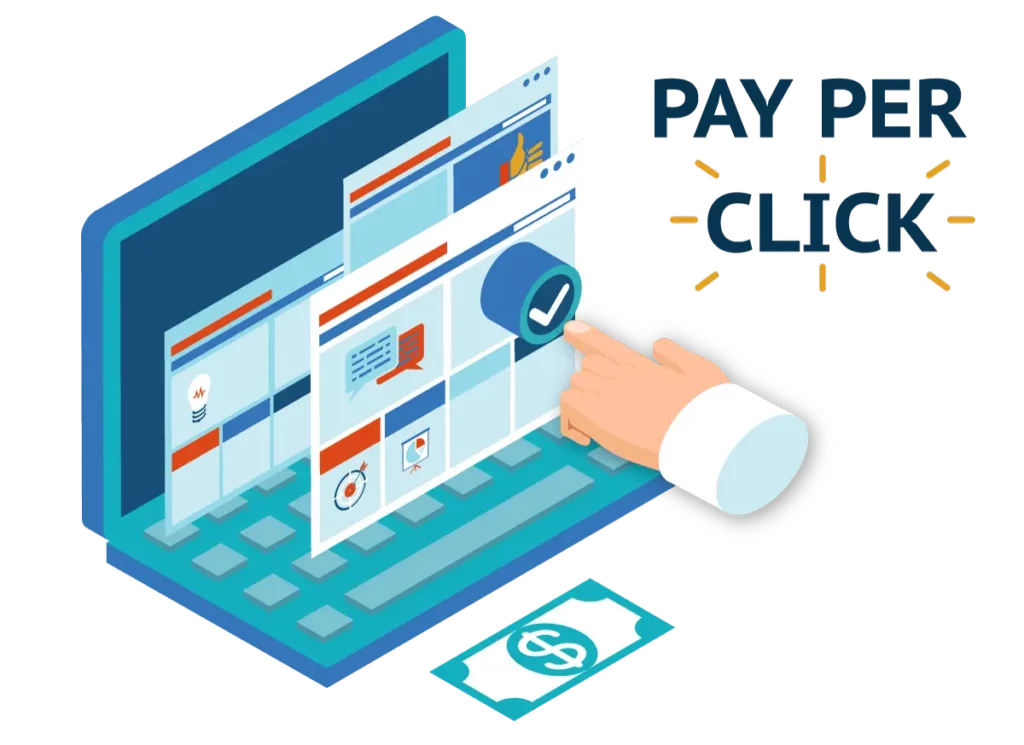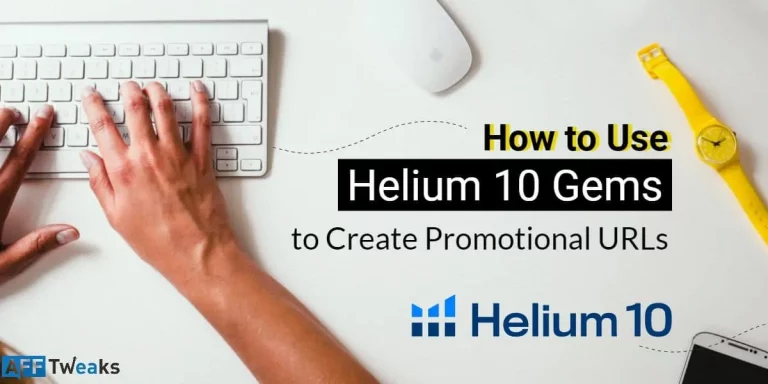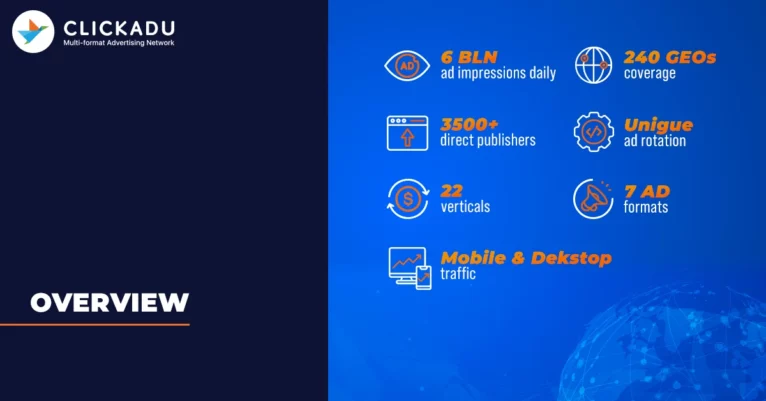Hey there, digital marketing enthusiasts! Let me take you on a captivating journey through the ever-evolving world of PPC advertising and beyond. Imagine having the power to reach your target audience with laser-sharp precision, all while maximizing your return on investment. That's precisely what PPC (Pay-Per-Click) advertising promises, and trust me, it's a game-changer!
But wait, there's more! We'll also explore some of the other marketing models that are shaking up the industry. From influencer marketing to social media advertising, we'll dive deep into strategies that can propel your brand to new heights.
Get ready to be inspired, challenged, and equipped with the knowledge to stay ahead of your competitors or expand and surpass your current status.
Buckle up, and let's start this exciting adventure together!
What is PPC Advertising?

Pay-per-click (PPC) advertising is an online advertising model where advertisers pay a fee each time one of their ads is clicked. It allows businesses to display ads on search engines, social media platforms, and other websites. The most common form of PPC is search engine advertising, like Google Ads.
When a user searches on Google, there is an ad auction that determines which ads will be shown and in what order, based on factors like:
- The advertiser's bid amount (how much they are willing to pay per click).
- The relevance and quality of the ad and landing page (summarized as Quality Score).
- Expected impact of ad extensions and formats.
The Basics of CPC
Cost Per Click (CPC) is the amount an advertiser pays each time someone clicks on their ad. It's a fundamental concept in PPC advertising that determines the financial cost of gaining traffic through search engines and other advertising platforms. The actual CPC is often less than the maximum CPC bid, which is the highest amount an advertiser is willing to pay for a click (Google Ads Support).
Factors Influencing Keyword Costs
Several factors influence the cost of keywords in PPC advertising:
- Competition: Highly competitive keywords typically have a higher CPC because more advertisers are bidding on them.
- Relevance: Keywords relevant to the ad content and landing page may result in a lower CPC due to better quality scores.
- Quality Score: A composite metric that assesses the relevance and quality of your ads, keywords, and landing pages. Higher quality scores can lead to lower CPCs.
- Ad Rank: This determines the position of your ad on the search engine results page. A higher ad rank often requires a higher CPC.
The auction system used in PPC advertising plays a significant role in determining which ads are shown and their order, thus influencing the cost of keywords. Advertisers select the maximum CPC bid, which, along with the ad's quality score, determines its ad rank in the auction (Google Ads Support).
Industry and Competition Impact on CPC
The cost of keywords can vary significantly depending on the industry. For instance, the finance and insurance industry is one of the most expensive in terms of PPC advertising, with an average CPC of $6.40, while other industries like dating and personals have lower average CPC.
Here's a brief overview of the average CPC across various industries:
| Industry | Average CPC (Search Network) | Average CPC (Display Network) |
|---|---|---|
| Legal | $6.75 | – |
| Finance & Insurance | $6.40 | – |
| Advocacy | $1.43 | – |
| Auto | $1.55 | – |
| eCommerce | $1.16 | – |
| Dating & Personals | – | $0.76 |
The average CPC in Google Ads across all industries is $2.32 on the search network and $0.58 on the display network, with substantial variation based on specific sectors.
The Role of Quality Score in PPC Advertising
Quality Score is a critical metric in pay-per-click (PPC) advertising that has a direct impact on the performance and cost-effectiveness of your campaigns. It is a quantifiable measure that influences how your ads compete in the PPC auction and the amount you pay per click.
Components of Quality Score
Quality Score is calculated based on several elements that reflect the relevance and quality of your keywords, ads, and landing pages. According to LinkedIn, the main components of Quality Score are:
- Click-Through Rate (CTR): This is an indicator of how often people who see your ad end up clicking it. A higher CTR suggests that your ad is relevant to users' search queries.
- Ad Relevance: This measures how closely your ad matches the intent behind a user's search.
- Landing Page Experience: This assesses the relevance and usability of your landing page, including how well it provides the information or service that the user is looking for.
- Historical Performance: The past performance of your PPC account also contributes to your Quality Score, including the performance of your ads and the overall account activity.
Each of these components plays a role in determining your Quality Score, which can range from 1 to 10, with 10 being the highest. A higher Quality Score signifies that Google considers your ads, keywords, and landing pages to be more relevant and useful to users compared to other advertisers.
How does Quality Score Affect CPC?
Quality Score has a direct correlation with your cost per click (CPC) and ad placement. As detailed on WordStream, a high-quality Score can lead to:
- Lower Costs: Advertisers with high-quality Scores are rewarded with lower CPCs, allowing them to drive more traffic without increasing ad spend.
- Better Ad Positions: Ads with higher Quality Scores are more likely to appear in top ad positions on the search results page.
- Increased Visibility: With better ad positions, your ads gain increased visibility, which can lead to higher click-through rates and more potential conversions.
Here is a simplified representation of how Quality Score affects CPC:
| Quality Score | Relative CPC | Ad Rank Potential |
|---|---|---|
| 1-4 | Higher CPC | Lower |
| 5-7 | Average CPC | Medium |
| 8-10 | Lower CPC | Higher |
Advertisers should aim to improve their Quality Score to benefit from lower costs and better ad placement. By focusing on the components of the Quality Score, such as fine-tuning ad copy for better relevance and optimizing the landing page experience, marketers can enhance their ad performance and achieve more with their PPC campaigns. Regularly reviewing and refining these areas is an ongoing process that can lead to sustained improvements over time.
The PPC Auction System
The PPC (Pay-Per-Click) auction system is a critical component of digital advertising platforms such as Google Ads. Understanding how this system works is essential for marketers looking to understand “how much a keyword costs in PPC advertising” and to effectively manage and optimize their ad campaigns.
How does an Ad Auction Work?
The ad auction is the process that happens with each search query, determining which ads will be displayed and in what order. It's not merely the highest bid that wins the spot but a combination of factors, primarily the bid amount and the ad's Quality Score.
The auction begins when a user enters a search query. Advertisers who have indicated a match with the user's query enter into the auction. The two main components that the platform considers are:
- The maximum bid specified by the advertiser for the keyword.
- The Quality Score, which is a metric that evaluates the relevance and quality of the ad and the landing page in relation to the keyword.
An Ad Rank is then assigned to each ad, which is calculated by multiplying the bid amount by the Quality Score. The ad with the highest Ad Rank gets the top advertising spot, followed by others in descending order of their Ad Ranks.
Maximizing Ad Rank
To maximize Ad Rank, advertisers must focus not only on how much they are willing to pay per click but also on enhancing the quality of their ads. The following are key areas to concentrate on:
- Quality Score Components: It's crucial to improve the ad's relevance to the keywords, the user experience on the landing page, and the click-through rate (CTR). As these factors improve, so does the Quality Score, which can reduce the overall cost per click (CPC) even if the bid remains the same.
- Relevance and Ad Copy: Crafting ad copy that closely matches the search intent helps in improving CTR and relevance. This includes refining keyword targeting, avoiding practices like keyword stuffing, and ensuring that the ad message aligns closely with the landing page content.
- Landing Page Experience: The user's experience after clicking the ad is paramount. This means the landing page should be relevant, provide valuable information, load quickly, and be easy to navigate.
- Bid Adjustments: While automated bidding strategies can take into account various factors such as location, device, and time of day, manual adjustments are also important. Regular monitoring and tweaking of bids ensure that campaigns remain competitive and yield positive returns on investment.
- Performance Monitoring: Continuous analysis of campaign performance allows for data-driven adjustments. This involves assessing metrics such as CTR, conversion rates, and cost per conversion, and making the necessary changes to improve Ad Rank and campaign effectiveness.
By understanding and leveraging the intricacies of the PPC auction system, advertisers can optimize their campaigns to achieve better ad placements at potentially lower costs. This includes utilizing both manual and automated bidding strategies, improving Quality Scores, and regularly refining campaign elements based on performance data.
Maximizing Ad Rank is not only about managing costs but also improving the overall effectiveness and efficiency of PPC campaigns. Advertisers committed to regular optimization efforts are more likely to see success in the highly competitive realm of PPC advertising.
Bidding Strategies Explained
In PPC advertising, the amount spent on keywords can be managed through different bidding strategies. These strategies are crucial for advertisers to optimize their ad spend and maximize the effectiveness of their campaigns.
Manual vs. Automated Bidding
Bidding on keywords can be done either manually or automatically. Manual bidding requires advertisers to set maximum bid prices for each keyword or group of keywords, allowing them to have granular control over their ad spend. On the other hand, automated bidding uses algorithms to set bid prices based on the likelihood of achieving ad clicks and conversions. This strategy can save time and potentially improve campaign performance by adjusting to real-time data.
| Bidding Type | Control Level | Time Investment | Best Suited For |
|---|---|---|---|
| Manual Bidding | High | High | Advertisers who want precise control over bids |
| Automated Bidding | Lower | Low | Advertisers who prefer time-saving and data-driven adjustments |
Advertisers using automated bidding strategies can also adjust their bids based on various factors such as location, device, time of the day, and audience demographics to optimize performance (Search My Expert). It is recommended that advertisers monitor and adjust their bids regularly to maintain competitiveness and maximize returns on their PPC campaigns.
Enhanced CPC and Ad Performance
Enhanced Cost-Per-Click (ECPC) is a hybrid bidding strategy that adjusts manual bids using historical data to improve the chances of getting clicks that are likely to convert into a sale or a lead. This strategy aims to provide a balance between maintaining control over bid amounts and leveraging automated adjustments to enhance ad performance.
ECPC works by increasing the bid in situations where a click is more likely to lead to a conversion and lowering it in less promising circumstances. This flexibility offers advertisers a way to potentially increase conversions without drastically increasing their ad spend.
| Bidding Strategy | Description | Benefit |
|---|---|---|
| Enhanced CPC | Adjusts bids based on conversion probability | Increases conversion chances without overspending |
The choice of the best bidding strategy depends on the advertiser's goals and budget. ECPC may be a suitable option for those looking to increase click chances without overspending. However, it's important to continually analyze campaign performance and adjust strategies as needed to ensure optimal results.
In summary, whether an advertiser opts for manual, automated, or ECPC bidding, the key is to align the bidding strategy with campaign objectives and to keep a close eye on performance metrics. By doing so, advertisers can make informed decisions that drive success in their PPC campaigns.
Keyword Research for Cost Management
Effective keyword research is a cornerstone of managing costs within PPC advertising campaigns. By understanding the distinction between broad and long-tail keywords and the search intent behind these terms, marketers can refine their strategies to optimize ad spend.
Broad vs. Long-Tail Keywords
Broad match keywords are expansive and can trigger ads for a wide range of search queries, including variations and related terms. While they can increase visibility, they often lead to higher keyword costs due to irrelevant clicks, which can diminish the overall quality score of the keyword. This in turn results in increased expenses for advertisers.
On the other hand, long-tail keywords are more specific phrases with a clearer intent. They typically have lower search volumes but attract more relevant traffic, leading to higher conversion rates and more cost-effective campaigns.
| Keyword Type | Description | Search Volume | Expected Cost |
|---|---|---|---|
| Broad Match | General terms, wider reach | High | Potentially Higher |
| Long-Tail | Specific, detailed phrases | Low | Lower |
Marketers should conduct thorough research to identify the most beneficial long-tail keywords for their campaigns. By targeting these specific queries, they can potentially reduce competition and cost while improving the relevance and effectiveness of their ads.
Search Intent and Keyword Selection
Understanding the search intent behind keywords is pivotal in selecting the most impactful and cost-efficient keywords for a PPC campaign. Search intent refers to the purpose behind a user's search query—whether they are looking to purchase, to learn, or simply to navigate to a specific website.
When selecting keywords, it's important to align them with the intended audience's search behaviors and the objectives of the PPC campaign. Keywords should be reflective of the user's stage in the buying cycle. For example, someone searching for “buy running shoes online” is likely further along in the cycle than someone searching for “best running shoes.”
Advertisers should prioritize keywords that closely match their target audience's search intent to enhance the relevance and performance of their ads, which can lead to a higher quality score and, consequently, lower costs.
To manage PPC costs effectively, marketers must regularly refine their keyword selection, ensuring that the terms used are as targeted and relevant as possible. This can involve analyzing search trends, understanding the competitive landscape, and considering the nuances of language used by the target audience. By aligning keywords with user intent, advertisers can create more successful campaigns that resonate with their audience and deliver a higher return on investment.
Case Study: TechGadgeio' PPC Turnaround
TechGadgeio, a rising star in the consumer electronics space, found themselves in a tough spot. Despite a robust product line and a loyal customer base, their online sales were plateauing. The challenge? A high Cost Per Acquisition (CPA) and a conversion rate that didn't justify their ad spend. They were in dire need of a PPC strategy overhaul.
The solution came from a boutique digital marketing agency that recognized the potential of TechGadgeio' unique selling points (USPs). The agency implemented a multi-faceted PPC approach:
- Refined Targeting: They honed in on TechGadgeio' ideal customer persona, using data-driven insights to adjust bids and tailor ad copy.
- Creative Ad Copy: By A/B testing various headlines and descriptions, they identified the messaging that resonated best with their audience.
- Landing Page Optimization: The agency revamped TechGadgeio' landing pages to improve user experience and conversion rates.
The results were impressive. TechGadgeio saw a 250% increase in ROI and a 150% uptick in conversion rates. Their CPA dropped by 35%, proving that a well-orchestrated PPC campaign could indeed turn the tide.
This case study exemplifies the transformative power of PPC advertising when combined with strategic thinking and a deep understanding of the target audience. It's a testament to the fact that with the right tactics, even a modest budget can yield substantial returns.
Optimizing PPC Campaigns
Optimizing pay-per-click (PPC) campaigns is an ongoing process that can significantly impact the success and cost-efficiency of your online advertising efforts. By refining keywords and ad copy, enhancing the landing page experience, and conducting regular monitoring and adjustments, advertisers can maximize their returns and ensure their PPC campaigns are performing at their best.
Refining Keywords and Ad Copy
Selecting the right keywords and crafting compelling ad copy are fundamental elements of a successful PPC campaign. To refine keywords, consider both broad and long-tail variations that align with search intent and keyword selection while avoiding keyword stuffing.
| Keyword Type | Pros | Cons |
|---|---|---|
| Broad | Wider reach | Higher competition, less targeted |
| Long-Tail | More targeted, typically lower cost | Lower search volume |
When it comes to ad copy, it should be clear, engaging, and relevant to the keywords targeted. This relevance helps improve the quality score, which can reduce how much a keyword costs in PPC advertising. A higher quality score is associated with better ad positions and potentially lower costs per click, making it a crucial factor in campaign optimization.
Importance of Landing Page Experience
The landing page experience is not just about aesthetics; it's about relevance, usability, and the ability to convert visitors into customers. A well-designed landing page with a clear call-to-action (CTA) that matches the promise of the ad copy can greatly improve the performance of a PPC campaign. Ensuring that the landing page is easily navigable and provides a good user experience is essential, as it contributes to a higher quality score and better ad performance.
Here are key elements to consider for an optimal landing page:
- Relevance to the ad copy and keywords
- Clear and concise CTA
- Fast loading times
- Mobile responsiveness
Regular Monitoring and Adjustments
PPC campaigns require consistent monitoring and adjustments to stay competitive and efficient. Advertisers should regularly review their campaigns to assess performance, adjust bids, and refine targeting strategies. This includes analyzing key performance indicators (KPIs) such as click-through rates (CTR), conversion rates, and cost per acquisition (CPA).
By staying vigilant and responsive to campaign data, advertisers can make informed decisions to optimize ad spending and improve overall campaign performance. Utilizing tools like Google Ads Performance Grader can aid in this process by providing insights and recommendations for improvement.
PPC campaign optimization is a dynamic and ongoing process. Refining keywords, creating effective ad copy, providing a superior landing page experience, and performing regular campaign analysis are all crucial steps for maintaining competitiveness and maximizing the return on investment in PPC advertising.
FAQs Related to PPC Advertising and Other Models
What is PPC advertising?
How does PPC work?
What is CPC?
Cost-per-click (CPC) is the actual amount you pay for each click on your PPC ad. It is calculated based on your bid, ad quality, and competition in the auction.
Why is PPC important?
PPC provides quick entry to search results, measurable results, integration with other marketing channels, and valuable audience data. It allows businesses to reach customers when they are searching.
How long until I see PPC results?
Wrapping Up
As we come to the end of our exploration through the domains of PPC advertising, it's pretty clear that this powerful marketing strategy holds immense potential for businesses of all sizes and industries. With the power of targeted, measurable, and cost-effective advertising, companies can effectively reach their desired audiences at the precise moment when they are actively seeking products or services.
However, it's crucial to remember that success in PPC advertising hinges on a well-crafted strategy, meticulous execution, and continuous optimization.
Ultimately, PPC advertising presents a unique opportunity to amplify brand visibility, drive qualified traffic, and foster long-term growth. From my own experience so far in similar domains, I can confidently stick to the thought that PPC advertising can do wonders if done properly. Whoever, you might be, either its affiliate marketing, marketing your own product or something in the different domain of advertising, I guess PPC Advertising is worth giving a shot!





